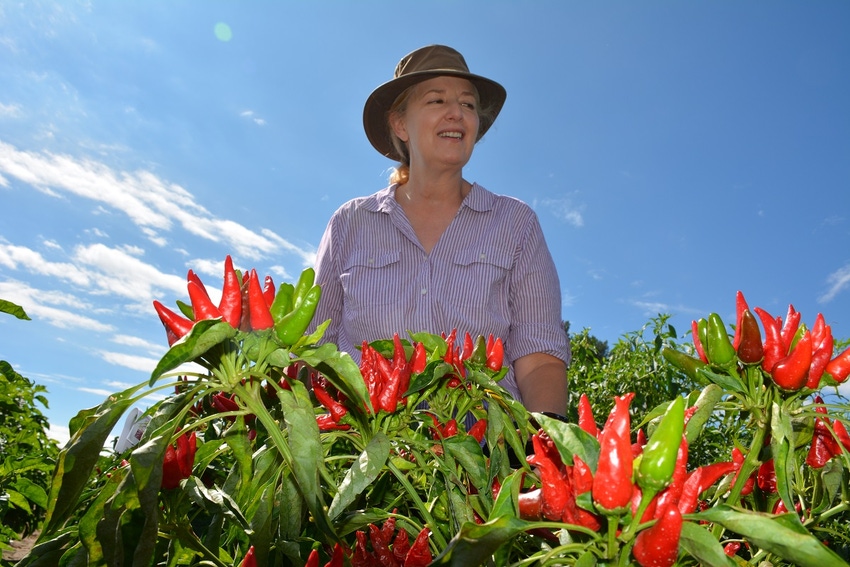
For years New Mexico’s green chile crops have been hand-harvested, a practice that guaranteed minimal damage and preservation of the high quality the state’s iconic crop has enjoyed for decades.
But times are changing. The labor that once was readily available to pick those mild, green chile peppers has largely disappeared and acreage has declined as producers find it more and more difficult to compete with foreign competitors.
Mechanization may be the answer. Most of New Mexico’s red chile crop is harvested mechanically, says New Mexico State University plant breeder Stephanie Walker, Las Cruces. But green chile offers different challenges. It’s more fragile, more prone to break and green varieties must be de-stemmed.
For the latest on southwest agriculture, please check out Southwest Farm Press Daily and receive the latest news right to your inbox
“Breakage is a much bigger issue with green chiles,” Walker says, “and stems have to be removed without damaging the chile.”
The mechanical aspect is close to being ready. An Israeli company has designed and tested a green chile harvester that showed promise in recent trials. “We also are working with a gentleman from India who has developed an effective de-stemmer,” Walker adds.
Looking for adaptable varieties
Walker is working on the plant, looking for varieties more adaptable to mechanical harvest and mechanical de-stemming. "I’m working on the chile orientation, the shape,” she says.
She works closely with engineers to coordinate the mechanics with the genetics. “I work with a lot of smart engineers,” she says. “Several disciplines are working together to develop this new system.”
She says new varieties must maintain the yield, quality and marketability that makes New Mexico green chile a valued commodity and source of pride for the state’s agricultural industry. “And we have to develop a variety we can harvest mechanically.”
She says the heat level must be right. “We need it low enough to satisfy most of the market. Mild, green chile is most popular.”
She’s also looking for consistency of the fruit. “We don’t want mis-shaped chile. Fruit straightness is important and works better with mechanical harvest and de-stemming.”
Basal branching is also important. Too many branches toward the base of the plant may lead to mechanical harvesters latching onto those branches and pulling the plant from the ground.
“We also don’t want plants that tend to lodge or split,” Walker says.
Disease resistance or tolerance plays an important role in chile variety development. “Chile peppers face a lot of disease and pest issues, so we have to screen for that.”
She’s close. “We have two excellent variety trials with viable breeding lines,” she says. “Some are promising but we’re still crunching the numbers to see if there are significant differences between these breeding lines and current commercial varieties.”
She’s also looking at plant spacing and how that may affect harvest and production.
Time-consuming process
The process takes time. “We are trying to generate more seed and we have to protect pollination to keep the variety pure.”
Walker says the mechanical harvester is promising. Recent trials showed “commercially acceptable breakage of 11 percent.”
She hopes to see a mechanical harvesting system that performs as efficiently as the one used for processing tomatoes in California. “We want to get to that point with green chile. I am always impressed with the work my colleagues in other states accomplish,” she says.
She says chile producers have been hard hit over the past few years trying to stay competitive with countries such as Mexico that pay far less for labor. “Mechanical harvest is one thing that could help bring acreage back. Producers prefer chile to be picked and de-stemmed by human hands, but the labor issue the past few years has made that difficult. Producers fear losing a crop because they can’t get it picked.”
The machinery, she says, is promising. “But genetics will play a role.”
About the Author(s)
You May Also Like






